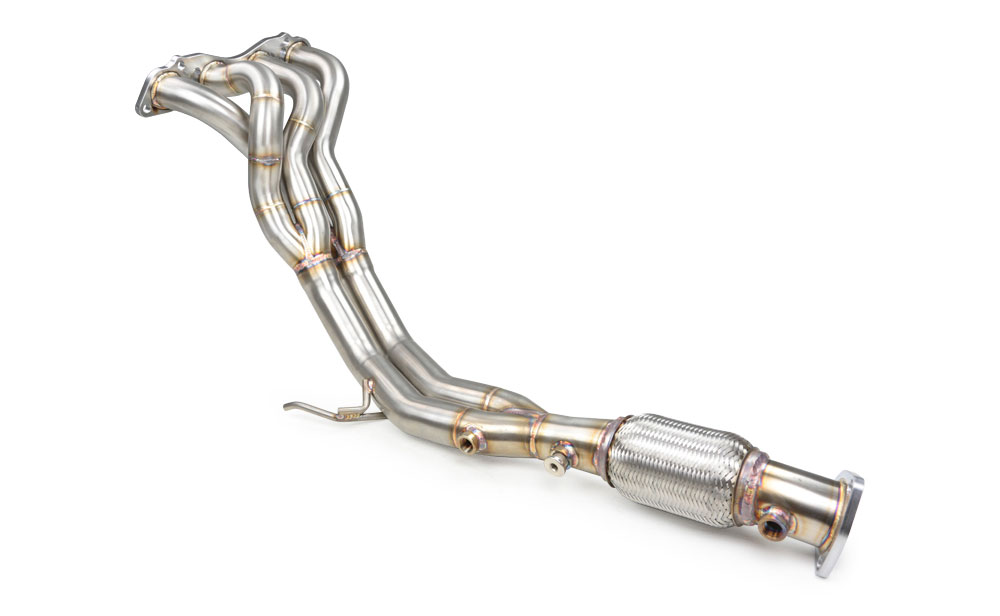When it comes to altering an automobile, its exhaust systems are among the most requested improvements in the world of car enthusiasts of cars. It’s not just about noise, though that’s certainly a factor. It’s about the way that exhaust systems affect efficiency, performance, as well as the overall experience. But the decision between using an exhaust system that is stock or upgrading to a more powerful one isn’t always simple.
To make an informed choice, it is essential to know the main distinctions between them and their advantage, and how they fit with your objectives as an enthusiast for cars.
Table of Contents
A stock exhaust: what is it?
An exhaust system that is stock is the one that’s with your car. It’s developed by the manufacturer to satisfy a range of requirements, including cost-efficiency, noise regulations, emission standards, and general performance of the vehicle. The standard exhausts are designed to achieve a balance between these aspects, ensuring that the vehicle is road-safe as well as environmentally friendly and comfortable for a typical driver.
The main elements of an exhaust system comprise the manifold for exhaust, the catalytic converter, the muffler, the resonator, and the tailpipe. They are usually constructed out of steel, like mild or aluminized, which are more affordable but less robust than more durable materials. The concept is focused on minimizing noise and maximizing fuel efficiency, while ensuring that the engine operates efficiently within its specifications.
Performance Exhaust: What Is It?
An exhaust performance system, however, is designed to maximize the power output of the vehicle, efficiency, and sound. They are usually aftermarket modifications, designed to improve certain aspects of the vehicle’s performance. Performance exhausts are built from superior quality materials such as titanium or stainless steel, which offer greater quality and durability, as well as corrosion resistance. They also come with larger diameter pipes, catalytic converters that are high-flow, and mufflers that are less restrictive for improved exhaust flow.
An exhaust designed for performance aims to decrease backpressure, which is the pressure that the exhaust gases encounter when they leave the engine. In reducing backpressure, an engine is able to eliminate exhaust gases more efficiently, which allows it to breathe easier and generate more power. In addition, the performance exhausts are usually tuned to emit an aggressive sound, and this is a significant feature that attracts a lot of enthusiasts.
Important Distinctions Between Performance and Stock Exhausts
Durability and Material Quality
Stock exhausts are usually constructed from aluminum or mild stainless steel, which are suitable for daily use, but are prone to corrosion and rust as time passes. Performance exhausts that are of high quality but are generally constructed of titanium or stainless steel. The latter are resistant to corrosion, heat, and wear, making them an excellent option for people who want to maintain their cars for many years.
Exhaust Pressure and Flow
One of the biggest distinctions between performance and stock exhausts is the way in which they handle the flow of exhaust. Standard exhaust systems are built to be quiet and in line with emission regulations. This usually means they are more restricted. This limitation creates backpressure, which could limit the performance of engines.
Performance exhausts, in contrast, are designed to decrease back pressure. The larger diameter pipes, the catalytic converters, and the less restrictive mufflers enable exhaust gases to leave the engine more openly. The improved flow of exhaust gases can increase power and torque, particularly for high-performance or modified engines.
Features of Sound
The exhaust sound from a car is a distinctive characteristic of many car enthusiasts. Exhausts that are standard are designed to be silent and quiet with resonators and mufflers, which dampen sound to meet legal requirements, and draw a large audience.
A Look at Weight
Weight reduction is a different area where performance exhausts usually beat stock systems. Stock exhausts tend to be heavier because they use more robust, less sophisticated materials, as well as other components such as heavy exhausts and resonators.
Compliance with Emissions
The exhaust systems that are standard on the market are made to meet the strictest standards for emissions, which ensure that the vehicle is road legal in all states. They contain components such as catalytic converters as well as oxygen sensors to limit harmful emissions.
Installation and Cost
Stock exhausts are part of the cost of the car. There’s no additional expense unless a replacement is required. Performance exhausts could be an investment of a major amount. Top-quality exhaust systems made of premium materials could cost hundreds of dollars based on the quality and how complex the installation is.
Gains in Performance: Reasonable Expectations
It is important to set realistic expectations when you upgrade to the performance exhaust. Although these systems may increase power and torque, the improvements are usually small unless they are combined with other modifications, such as a cooling air intake system, tuning the engine, and forced induction. For a naturally aspirated engine, a performance exhaust could boost power by 5-10, depending on the car and the performance of the exhaust system.
Striking the Correct Balance Between Sound and Performance
For a lot of people who are into sound, the sound of an exhaust is as significant as gains in performance. But it’s crucial to find an equilibrium between sound and function. An exhaust that’s too noisy can be annoying when driving for long periods of time or attract unwelcome interest from law enforcement. In contrast, an exhaust that’s too quiet might not offer the audio feedback that avid drivers want.
Environmental and Legal Aspects
Prior to upgrading to a performance exhaust, you should take into consideration the environmental and legal consequences. In some areas, altering the exhaust system may end the warranty of the vehicle or cause it to not be compliant with local noise and emission laws. Certain performance exhausts are intended specifically for off-road usage and might not be street-legal.
Conclusion
The decision between stock and performance exhaust depends on your needs as a car lover. If you’re looking for reliability, consistency, and a peaceful sound, then a stock-style exhaust could be the best choice. If you’re looking to boost your vehicle’s performance, audio, and overall experience, an exhaust with a performance rating is worthwhile to consider.




